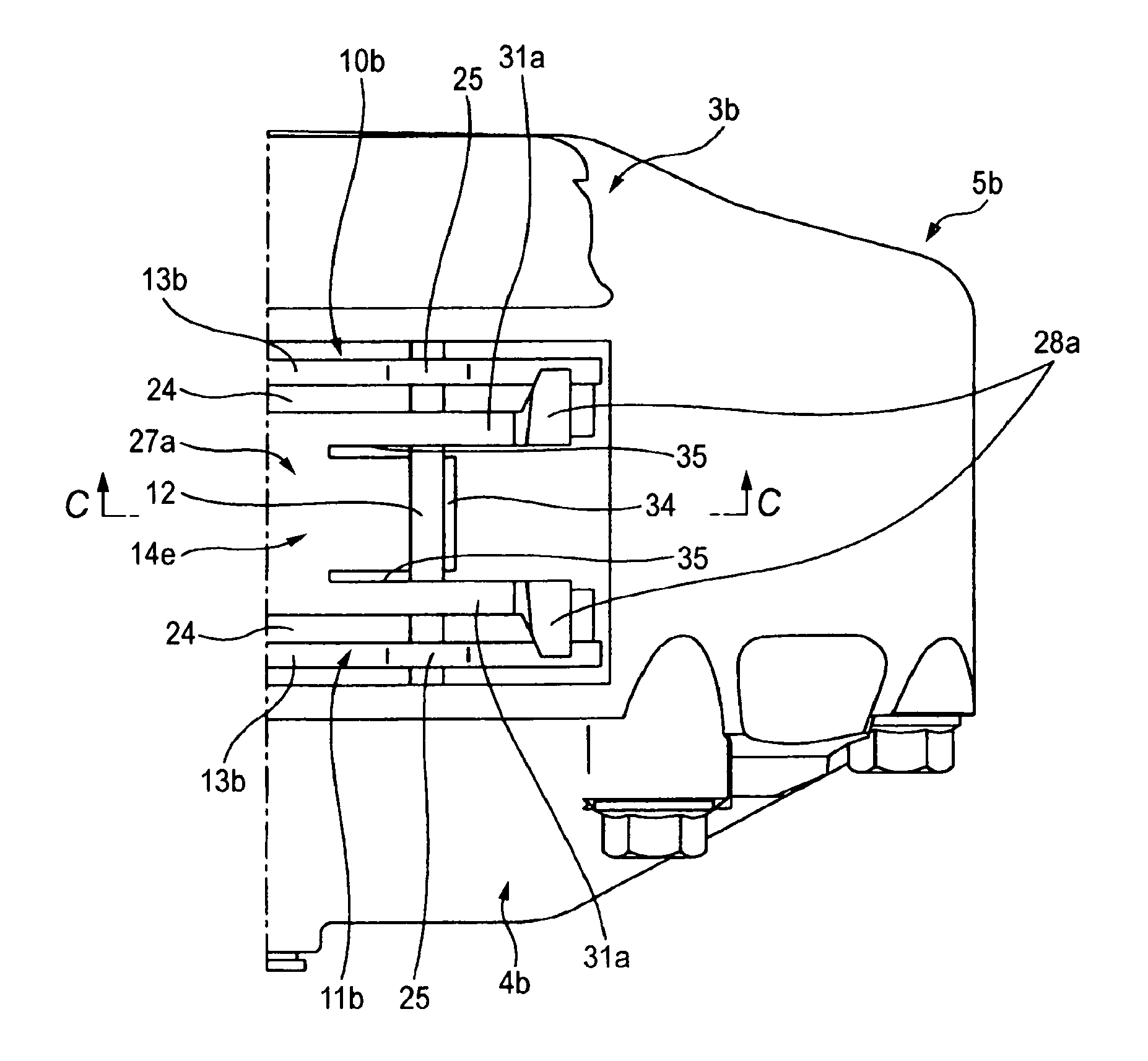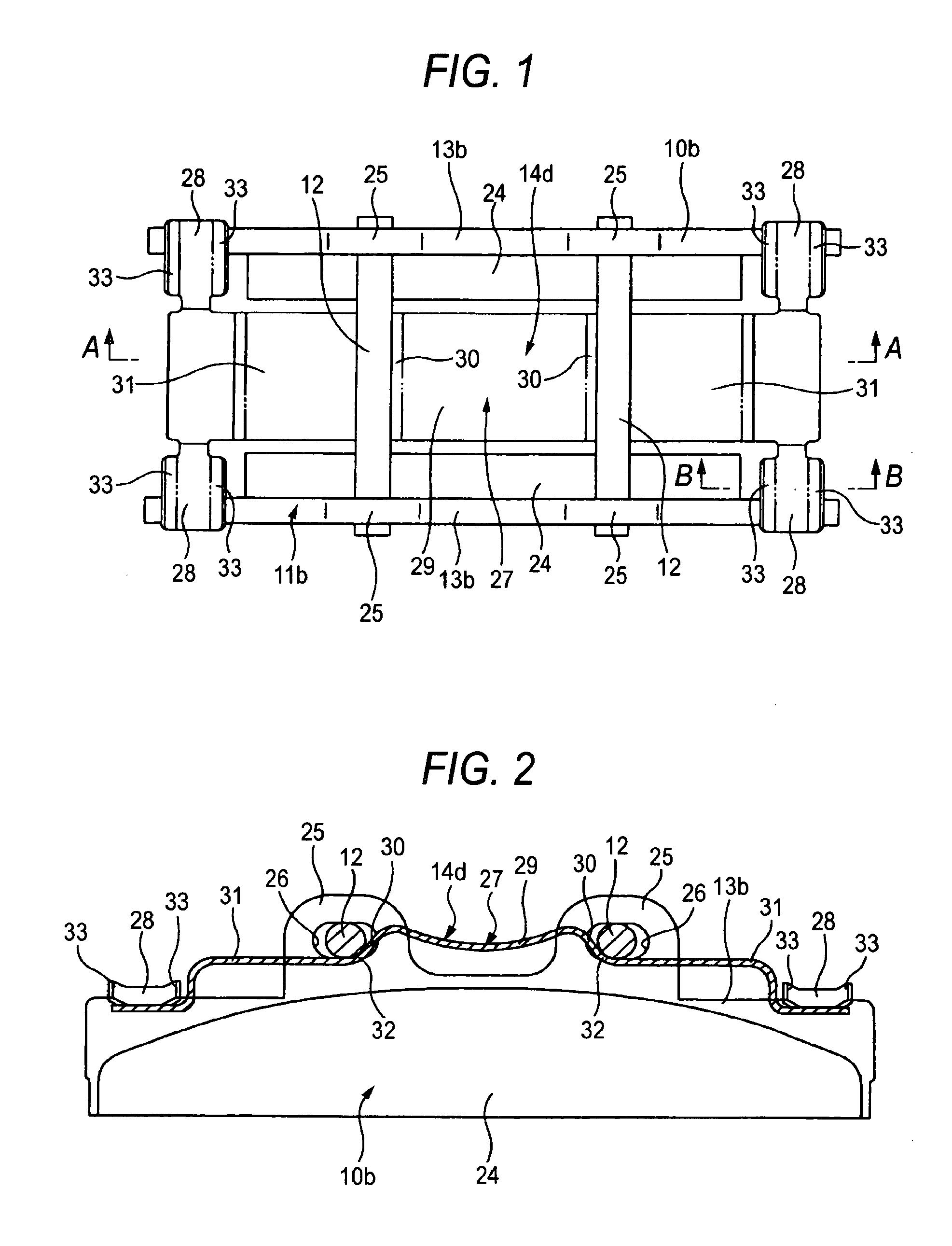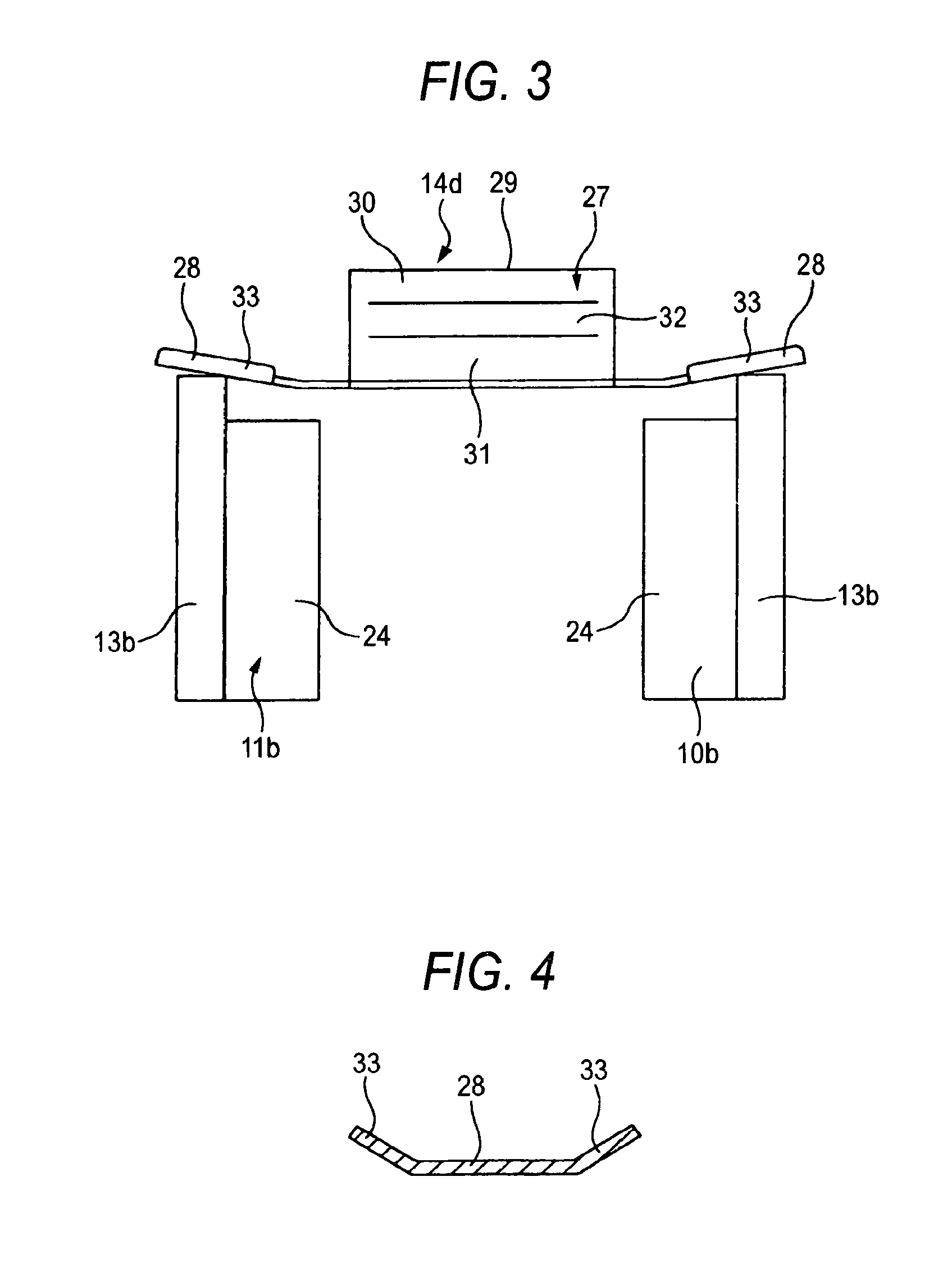Pad clip for disc brake
a technology of disc brakes and pads, applied in the field of pads, can solve the problems of poor material yield, increased unused portion of metal plates constituting materials, poor blanking performance, etc., and achieve the effect of excellent blanking performance and low cos
- Summary
- Abstract
- Description
- Claims
- Application Information
AI Technical Summary
Benefits of technology
Problems solved by technology
Method used
Image
Examples
first exemplary embodiment
[0048]FIG. 1 through FIG. 4 show a first exemplary embodiment of the invention. Illustration and explanation of duplicated portions with the background art structures shown in FIG. 8, 9 are omitted or simplified and an explanation will be mainly given to a characteristic portion of the exemplary embodiments as follows.
[0049]In the first exemplary embodiment, respective two portions of projected portions 25, 25 projected to an outer side in a radial direction of the rotor 2 (refer to FIG. 8, 9, 11, 12) are formed at outer peripheral edges of middle portions in a rotational direction of pressure plates 13b, 13b constituting the outer pad 10b and the inner pad 11b. Further, through holes 26, 26 are respectively formed at the respective projected portions 25, 25. Further, at a portion proximate to an outer side in the radial direction of the outer peripheral edge of the rotor 2, pins 12, 12 constituting a caliper, not illustrated, and provided in a state of being made to bridge an outer...
second exemplary embodiment
[0059]FIGS. 5 through 7 show a second exemplary embodiment of the invention. A pad clip 14e of the second exemplary embodiment is formed with arm portions 31a, 31a provided with press pieces 28a, 28a at front end portions thereof respectively at positions remote from each other in the axial direction of the rotor 2 (refer to FIG. 8, 9, 11, 12). That is, the arm portions 31a, 31a are constituted by both end portions in the axial directions of an engaging plate portion 27a and portions proximate to both ends in the rotational direction of the rotor 2 for engaging the pad clip 14e with the pin 12 made to bridge an outer body portion 3b and an inner body portion 4b constituting a caliper 5b. Further, locking hook portions 34 are respectively formed at a middle portion in the axial direction and both end portions in the rotational direction of the rotor 2 of the engaging plate portion 27a. Therefore, the respective locking hook portions 34 are arranged between the respective arm portions...
third exemplary embodiment
[0065]Although according to the above-described respective exemplary embodiments, an explanation has been given of a case of applying the invention to the structure of hanging the outer pad and the inner pad by the pin made to bridge the outer body portion and the inner body portion, the invention is applicable also to a structure of supporting the two pads 10a, 11a by support members of the locking pins 36, 36 or the like formed at the two body portions 3a, 4a as in the second example of the background art structure shown in FIGS. 11 through 13. Further, in order to stabilize a state of bringing the respective elastic pieces and the end edges of the pressure plates into contact with each other regardless of a behavior of the two pads, progress of wear of the linings or occurrence of uneven wear without one side contact, the respective press pieces may be bent to project to the inner side in the radial direction at the center portion in the rotational direction of the rotor.
PUM
 Login to View More
Login to View More Abstract
Description
Claims
Application Information
 Login to View More
Login to View More - R&D
- Intellectual Property
- Life Sciences
- Materials
- Tech Scout
- Unparalleled Data Quality
- Higher Quality Content
- 60% Fewer Hallucinations
Browse by: Latest US Patents, China's latest patents, Technical Efficacy Thesaurus, Application Domain, Technology Topic, Popular Technical Reports.
© 2025 PatSnap. All rights reserved.Legal|Privacy policy|Modern Slavery Act Transparency Statement|Sitemap|About US| Contact US: help@patsnap.com



